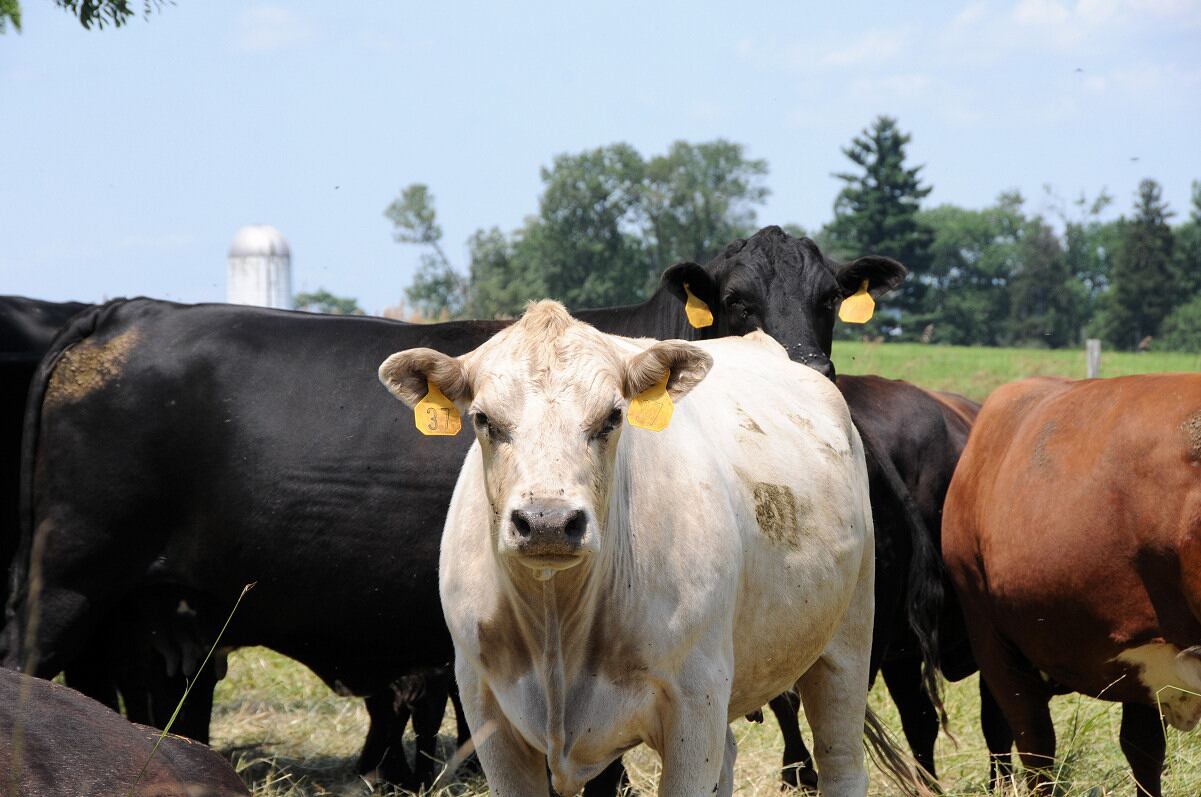Gideon Henderson offered six areas in which food can play a role in reducing carbon emissions and accelerate the UK’s journey toward net-zero. He was speaking at the Institute of Food Science and Technology’s Lecture 2021, ‘Net zero: a key driver for change in the UK food system’.
Changing proteins
First, Henderson aimed at proteins as a key area in which things could be changed to help lower carbon emissions. He highlighted beef as one of the biggest producers of greenhouse gases, moving down the list of protein sources and their impact on the environment.
He argued UK consumers could cut the amount of beef in their diets and better regulate the amount of animal protein that they ate.
“From a dietary point of view from across the nation, we could perhaps reduce our protein uptake – we eat roughly twice as much protein as we need as a nation – so we could decrease the amount of protein,” Henderson explained.
“We should also be seeking to move people’s diets down this ladder towards those which have a lower carbon footprint.”
While some might suggest that alternative proteins – such as meat alternatives or lab-grown meat – could be the way to go, Henderson argued that there were more readily available alternatives on the market.
“Peas and legumes for instance are wonderful sources of protein – we have deep knowledge of their genetic richness to further enhance the way we use them,” he added. “They’re nitrogen fixers – very beneficial in our soil systems.”
“People think they know what they mean by alternative proteins, but another example is insects. Insect bioreactors and insect conversion is another form of alternative protein at the moment.”
Behavioral change
Changing consumer behaviour was another area in which the UK could tackle its CO2 emissions, said Henderson.
Food labelling could be used to tell consumers the impact of products on CO2 emissions, ultimately promoting those foods that were ‘better’ for the environment, he said.
“This is happening increasingly and there are different versions of this,” said Henderson. “One of the challenges here is we don’t really know how much difference this makes. There’s a lot of evidence that people don’t pay much attention to labels, they just buy the cheap stuff.
While older generations may not be so swayed by environmental labels, Henderson believed there was potential for younger consumers to take these messages on board and allow them to influence their buying habits.
“It’s a bit like the Wild West though and it’s threatening to become insufficiently regulated,” Henderson added. “We need to get on top of this and work out how to certify and how to have a unified system for environmental labeling for food stuffs.
“There’s also the challenge that lots of people don’t shop in store, they shop online. They don’t see this stuff – it’s only when it turns up and it’s in their fridge do they see it.”
Gene editing
Henderson went on to talk about the potential of gene editing, a technology he claimed the Government was already very interested in implementing in the UK.
“The benefits we can accrue from gene editing crops are very substantial,” he said. “We can reduce pesticide use, increase the nitrate capabilities of crops to drive down CO2-equivalent emissions and adapt our crops for weather.
“We can also adapt our crops and others to make them more climate resilient, to the climate change we know will come even if we are successful in reaching net-zero.”
Henderson turned his attention to the potential benefits SMEs could receive if regulations relating to gene editing were made more lenient.
He said following restructured rules regulating the gene editing of crops in Argentina in 2015, the number of different products brought to market skyrocketed there, many of which were created by smaller businesses. By comparison, its genetically modified organism (GMO) market was stagnant.
Only big businesses could wade through litigation and plough through red tape when trying to bring GMO products to market, Henderson claimed. Fewer restrictions on gene editing made it easier for SMEs to navigate the system and bring to market innovative new products, without needing the monetary clout multinationals have behind them.
However, public opinion could hinder the progress of gene editing in the UK, Henderson said. A recent YouGov poll found consumers were generally happy for gene editing in plants, but reacted much more negatively for the same technologies used on animals.
Vertical farming
Next on Henderson’s list of potential solutions was the increased use of vertical farming. He suggested its use could free up land that has been used for more intensive farming methods.
“If we want to rewet some of our peat and get off peatlands, or if we want to increase our amount of horticultural products, indoor farming is an exciting technology that is being pursued in many places already.
“This is a technology we need to look at much more closely – there’s lots of room for innovation. Plus, renewable energy gets rid of one of its disadvantages: the need to keep the lights on. And once you get rid of that then you can speed up production by growing extra crops in the day.”
In addition to vertical farming, wetland agriculture had the potential to offered reduced carbon emissions, Henderson said.
Wetland agriculture
He suggested taking inspiration from Asian countries that grow wetland crops as a way to maximise under-utilised land. However, he acknowledged that this wouldn’t be a simple task and new innovations would need to be developed to manage water levels and adapt crops to wetter conditions.
However, the successful implementation of more wetland agriculture could lead to the greater production of crops such as watercress and even allow the UK to produce fruits such as cranberries.
Food Waste
Finally, Henderson identified food waste as a significant component of the UK’s greenhouse gas emissions.
With 70% of food waste occurring post farm gate, the Government had already started looking into ways to curb food waste in the household.
“To Government that’s a relatively easy low hanging fruit we can try and address and we made a commitment in our strategy to a separate food waste recycling to drive down food waste.”





